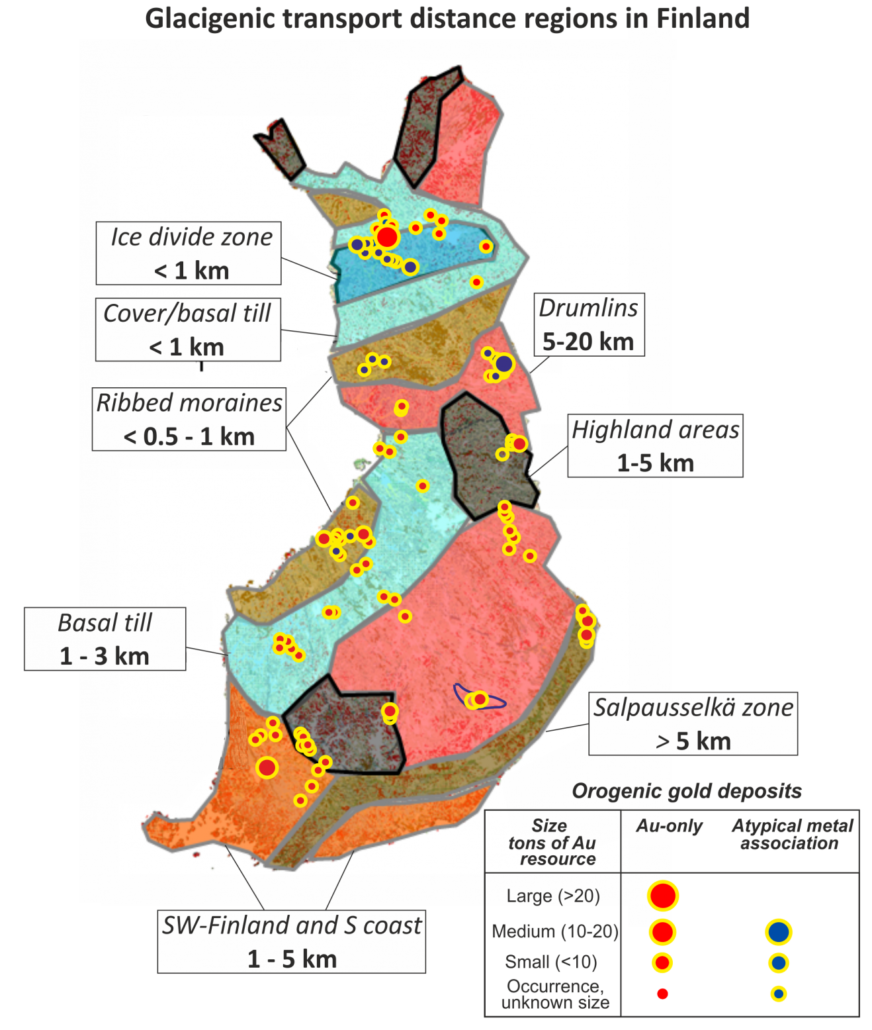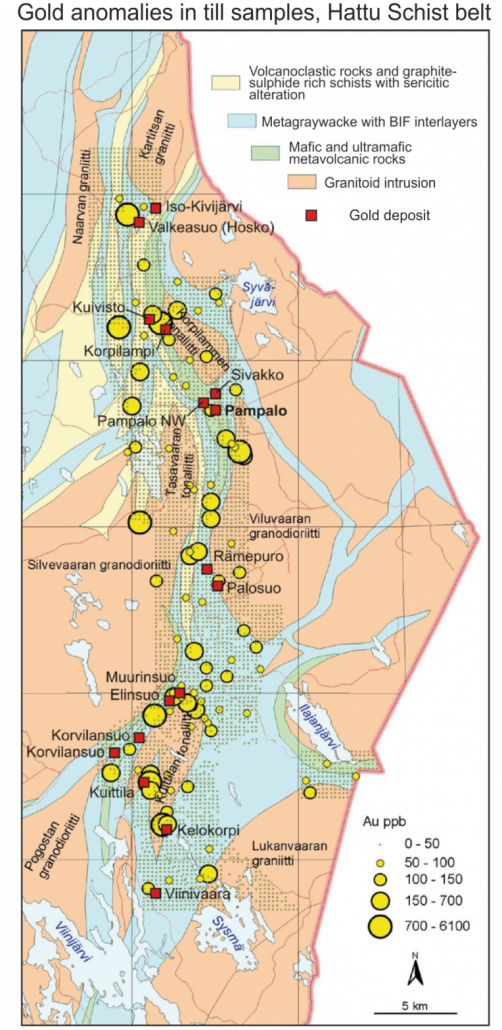Ninety six per cent of Finland´s area is covered by glacigenic sediments. Till debris, rock and mineral fragments have always dispersed some distance from the source(s) in a direction of ice-flow, giving larger and more homogenized indication of source than the bedrock itself. This is seen as secondary dispersion that is influenced by many different factors which gives specific distribution patterns of elements in different glacial morphology areas. However, the glaciogenic transport distance is just a few kilometers in most areas in Finland.
The most typical pathfinder elements for orogenic gold deposits are Ag, As, Bi, Co, Cu, Sb and Te. The pathfinder elements form a homogenous anomalous halo around the deposit itself. Therefore they can show a larger anomaly in till than the precious metal gold itself.
Gold enriches and forms gold grains and/or nuggets during weathering processes. The precious gold do not weather, thus the grains could have transported with the repeated ice-flow and melting phases far from the source area. This causes enrichment of gold grains in certain layers and deposits, but may also cause false anomalies which are problematic in interpretation of the results, particularly, on the areas of remarkably thick drift.
Although many sophisticated techniques can be used, direct Au contents in till are the best indicator of the deposits in most cases. Good examples of the use of till geochemistry in Au exploration are from the Hattu Schist Belt, eastern Finland, from the Central Lapland Greenstone Belt, northern Finland and from orogenic gold provinces in southwestern Finland. In these areas, anomalous concentrations of Au, as well as As, B and W in till closely reflect the gold occurrences.
(Last update: 20.05.2020)



